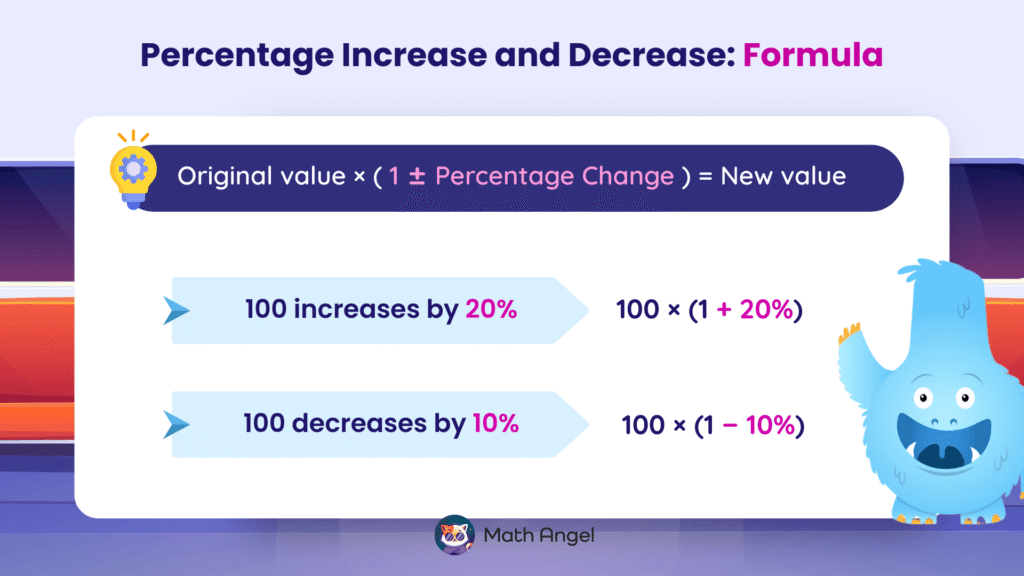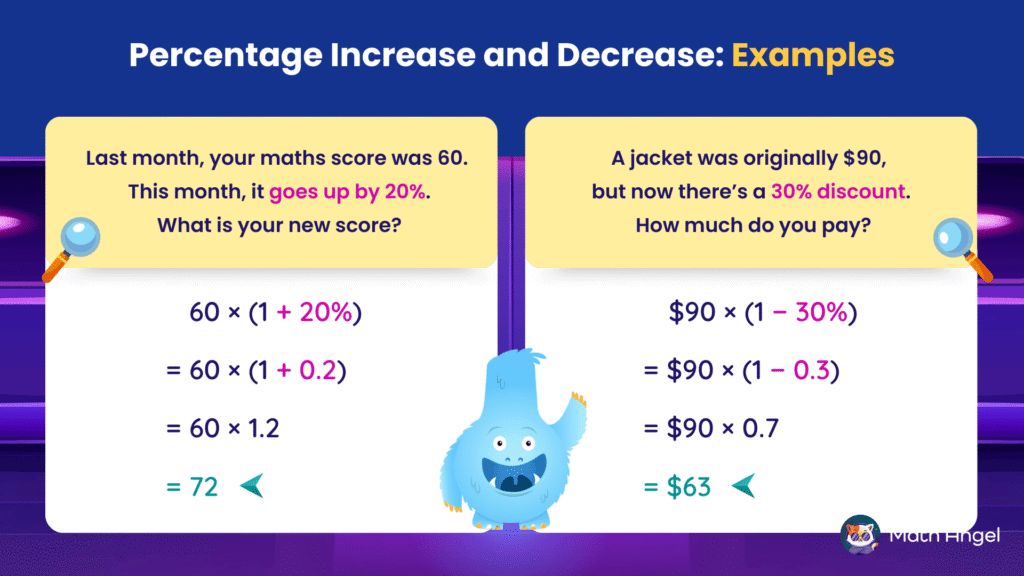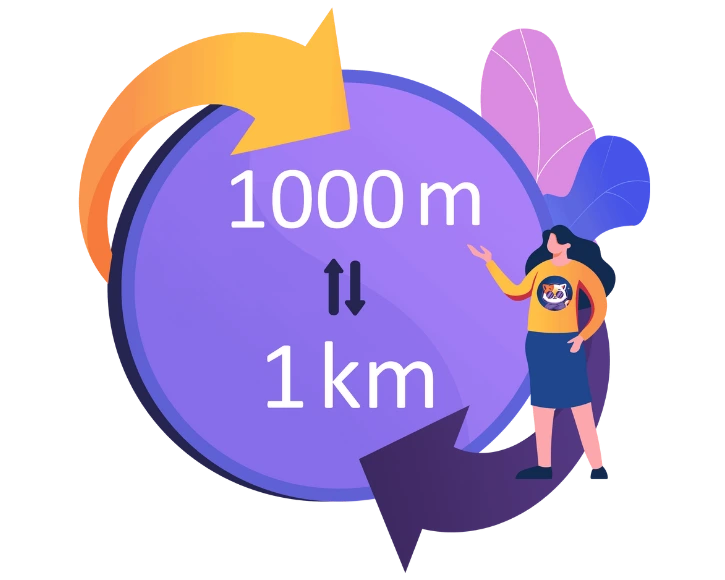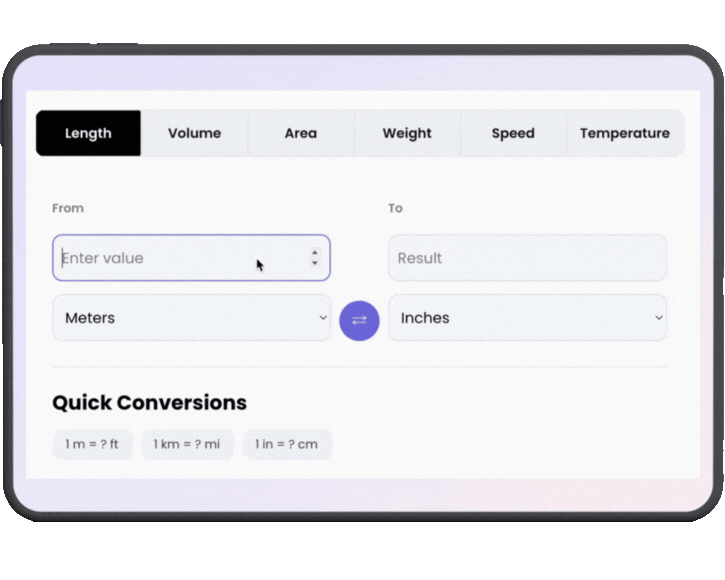Percentage Increase and Decrease
Table Of Contents
🎬 Math Angel Video: How to Work Out Percentage Increase and Decrease
Percentage Increase and Decrease Formulas

⏩️
🛎️ Formula for Percentage Increase and Decrease
$$
\large \text{Original value} \times \left( 1 \pm \text{Percentage Change} \right) = \text{New value}
$$
- Use + for an increase
- Use − for a decrease
For example:
- Increase: £100 increases by 20% → 100 × (1 + 0.20) = £120
- Decrease: £100 decreases by 10% → 100 × (1 − 0.10) = £90
Percentage Increase and Decrease Examples

⏩️
🛎️ Example 1: Percentage Increase
Q: Last month, your maths score was 60. This month, it goes up by 20%. What is your new score?
$$ 60 \times (1 + 20\%) = 60 \times (1 + 0.2) = 60 \times 1.2 = 72$$
Answer: So your new score is 72. Great improvement! 🥳
🛎️ Example 2: Percentage Decrease
Q: A jacket was originally $90, but now there’s a 30% discount. How much do you pay?
$$ 90 \times (1 – 30\%) = 90 \times (1 – 0.3) = 90 \times 0.7 = 63$$
Answer: So now you only need to pay \$63. What a bargain! 🥳
How to Find the Original Value (Reverse Percentage)?

⏩️
🛎️ What is Reverse Percentage?
Sometimes you know the final amount after a percentage increase or decrease (such as a discount or a price rise), but you need to work out the original amount before the change. This is called a reverse percentage.
🛎️ Example of Solving Reverse Percentage Problem
Q: You paid $36 for a concert ticket after a 40% student discount. What was the original price?
Set up the equation:
original price × (1 − 40%) = 36Convert the percentage to a decimal:
original price × 0.6 = 36Solve for the original price:
original price = 36 ÷ 0.6Final answer:
original price = $60
Answer: So, the original price of the concert ticket is $60.
🍪 Quiz: Practicing Percentage Increase / Decrease
🎩 Stuck on Percentage Problems? Ask AI Solver
Need math help? Chat with our AI Math Solver at the bottom right — available 24/7 for instant answers.
unit Converter



